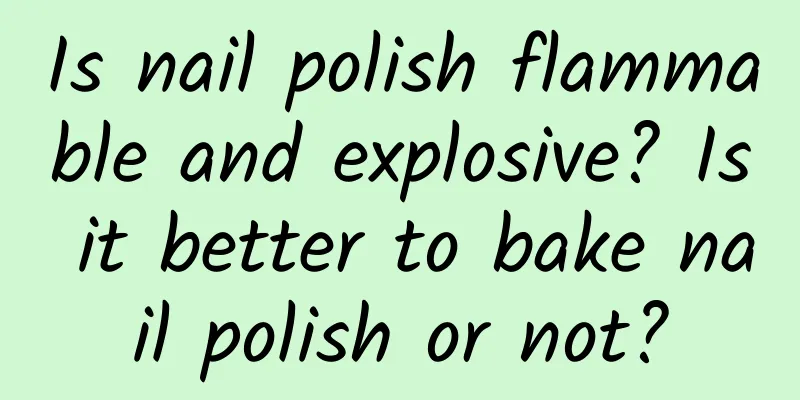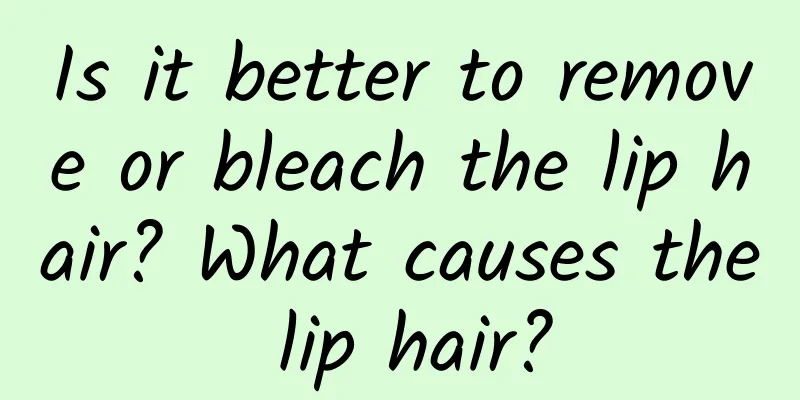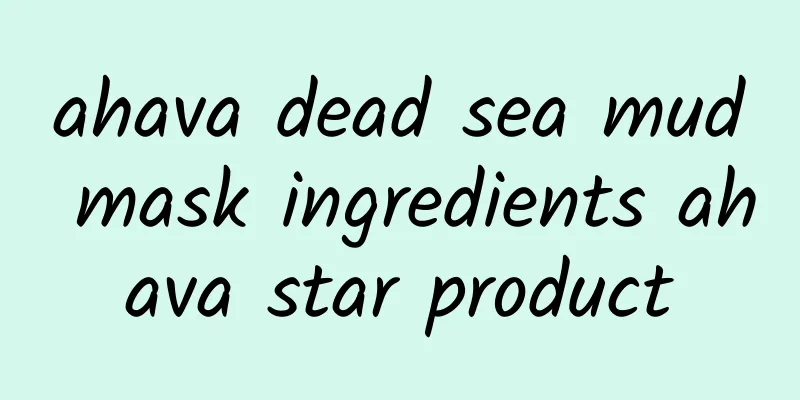Is nail polish flammable and explosive? Is it better to bake nail polish or not?

|
Nail polish is a very common cosmetic product in our daily life, and there are many types of nail polish. Many people think that nail polish is flammable and explosive. So let's find out if nail polish is flammable and explosive? Is it better to bake nail polish or not? Is nail polish flammable and explosive?Nail polish is not a flammable or explosive item, but nail polish does have the risk of being flammable and explosive. The main component of nail polish is natural resin, which is non-toxic and odorless, healthy and environmentally friendly, and cannot be ignited. The raw materials of nail polish are taken from light-curing resin, which is environmentally friendly, non-toxic, healthy and safe. It is compatible with the common advantages of glue and nail polish, and has a full and clear color. These ingredients are harmless to the human body. However, too many chemicals are added to the ingredients of nail polish, and long-term use will be harmful to the human body. Therefore, when we buy nail polish, we should buy it in a regular shopping mall and pay attention to the description of the ingredients on the nail polish manual. When using nail polish, try to be in a ventilated and spacious environment, and do not apply nail polish in a narrow space. Is it better to bake nail polish or not bake it?Each has its own advantages. Nail polish generally does not need to be baked, mainly because it is convenient to make. Patterns can be selected from stickers or transfer stamps, but large accessories are not possible. Nail polish must be illuminated, that is, the kind used in nail salons. This is relatively complicated to operate by yourself, but the color is long-lasting, the color patterns are richer, and the choice of accessories is more diversified. Nail polish ingredients: The main ingredients are 70%-80% volatile solvents, about 15% nitrocellulose, a small amount of oily solvents, camphor, titanium dioxide, and oil-soluble pigments. There is no need to illuminate the light, so nail polish is generally placed in a transparent bottle and sealed when stored. The main ingredients of nail polish are natural resins and some color materials. This material will solidify under ultraviolet light instead of volatilizing, and it will form a plastic-like film. Nail polish will solidify under ultraviolet light instead of volatilizing, and it will form a plastic-like film. Each layer of nail polish needs to be hardened under ultraviolet light before the next layer can be applied. Therefore, the hardness and glossiness are much better than ordinary nail polish, and it can last longer, up to 28 days, while nail polish can only last up to seven days. Is it better to have peelable or non-peelable nail polish?In fact, there are so many differences between the two nail polishes, mainly because the ingredients of the two nail polishes are very different. The main matrix in ordinary nail polish is some toxic organic solvents, so the smell will be very strong. Ordinary nail polish is also called oily nail polish. Peelable nail polish is also called water-based nail polish. The matrix inside is generally only water and acrylic emulsion, so it is almost odorless. Compared with ordinary nail polish, peelable nail polish is much less toxic. In addition to the obvious difference in appearance, the two nail polishes are also very different in use. Generally, it is difficult to apply ordinary nail polish evenly, and it requires certain techniques, but peelable nail polish is actually very easy to apply evenly. Ordinary nail polish will last longer after it is applied, that is, it has good durability, but peelable nail polish has poor durability and is easy to tear off. The first and most obvious difference between peelable nail polish and ordinary nail polish is the difference in appearance. The appearance can be described from two points, one is visual and the other is olfactory. Visually, it can be clearly seen that the peelable nail polish will be relatively diluted. From the sense of smell, the smell of peelable nail polish is relatively smaller. It can be said that peelable nail polish has almost no smell. What is the difference between peelable and non-peelable nail polish?The ingredients and usage of the two nail polishes are different. Peelable nail polish is water-based nail polish, and non-peelable nail polish refers to ordinary oil-based nail polish. In addition to the appearance, the usage of these two nail polishes is also different. Non-peelable nail polish is actually more difficult to apply than peelable nail polish, but it will last longer after use. When choosing, choose according to your personal situation. There are many nail polishes now, which can be divided into peelable and non-peelable types. When choosing, choose according to your personal situation. Choosing an unsuitable one will have a certain impact on your nails. Nail polish itself will have a certain smell, and it also contains some chemicals, so it is actually very important to choose these two types. |
<<: Where can I buy Noreva whitening essence? Can pregnant women use Noreva whitening essence?
>>: How long can fat filling of the temple last? Is fat filling of the temple effective?
Recommend
Super beautiful and white blue nail art series
Manicure is very popular among female friends, ma...
How to use fresh black tea cream? How much does fresh black tea cream cost?
The choice of facial cream is also very important...
How to match a hat with a cotton coat? What hat is suitable for winter?
Hats are an essential fashion item for dressing. ...
Will perfume cause allergies? Does perfume need to be shaken before spraying?
Perfume will not cause infertility, but pregnant ...
Is it better to use a brush or a powder puff to apply powder?
The makeup tools for loose powder are usually loo...
Can pregnant women use steam eye masks? People who should not use steam eye masks
Sometimes expectant mothers are already very tire...
Can Kiehl's white clay remove closed comedones? Can Kiehl's white clay remove acne?
Kiehl's White Mud is a very useful cleansing ...
Can eyeliner be used as eyebrow pencil? Can eyeliner be used as mascara?
Eyeliner is a common cosmetic. It has many uses, ...
Are there any side effects of lipolysis injections? Does it hurt?
Have you ever heard of lipolysis injections? Do y...
Who is the Zhan Yan mask suitable for? What is the difference between the white and blue Zhan Yan masks?
The Zhan Yan Mask is a very popular medical beaut...
Can dieting help you lose weight without exercise? Can dieting help you lose weight without exercise?
We all know that the best way to lose weight is t...
How often should Takata whitening injection be used? Can Takata whitening injection be used every day?
Whitening injections are now being taken by more ...
What is the acne patch? What is the difference between the daytime and nighttime acne patch?
There are many products for removing acne. The Me...
Will drinking soup when staying up late make you fat? Is drinking soup when staying up late the reason for gaining weight?
With the development of the times, young people o...
What to do if the eyeliner is crooked? Just smudge it into a smoky eye
For beginners, drawing eyeliner is the most diffi...









